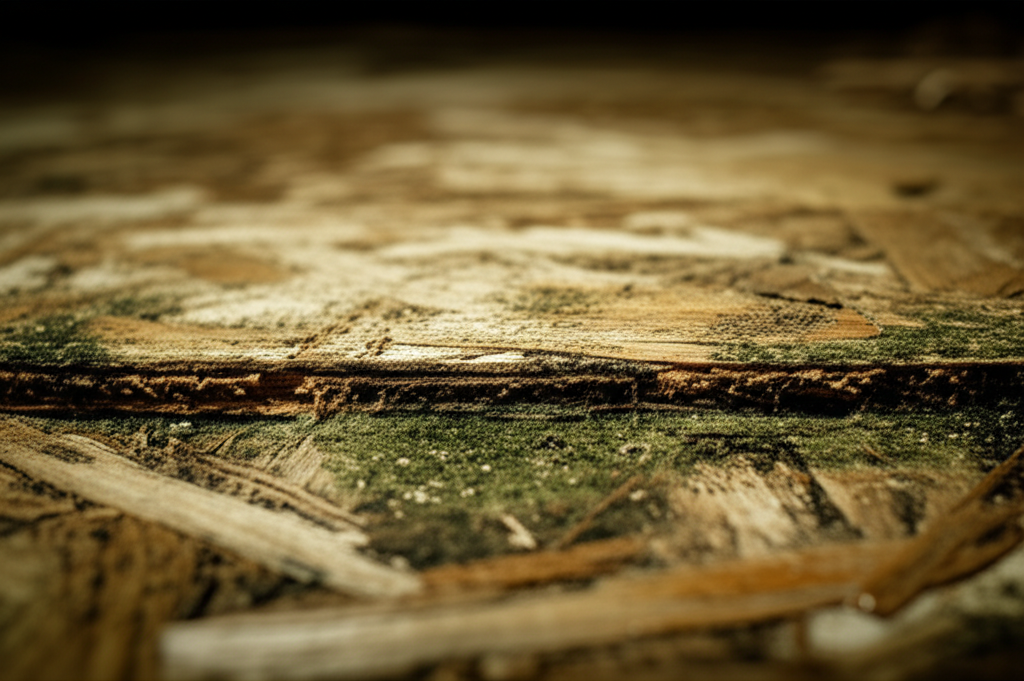Is your "green" home actually turning rotten? You might be surprised to learn that a material widely touted as eco-friendly could be silently wreaking havoc on your house, costing you thousands in repairs and potentially impacting your health. We're talking about certain types of engineered wood, specifically those vulnerable to moisture and fungal growth.
This isn't just about aesthetics; it's about structural integrity, indoor air quality, and your long-term investment. Let's dive into the details and uncover the truth behind this hidden threat.
What is This "Eco-Friendly" Material and Why Is It So Popular?
The culprit is often some form of Oriented Strand Board (OSB) or Medium-Density Fiberboard (MDF), especially when used in applications where it's exposed to moisture. These materials are popular because they are:
- Cost-effective: Cheaper than solid lumber.
- Made from recycled content: Utilizing wood scraps and byproducts.
- Readily available: Found in most home improvement stores.
However, the very nature of their composition – wood strands or fibers glued together – makes them susceptible to problems when they get wet.
How Does This "Eco-Friendly" Material Rot Your Home?
The problem stems from the glue and the wood fiber itself. Here's how:
- Moisture Absorption: OSB and MDF are highly absorbent. They act like sponges, drawing in moisture from humidity, leaks, or even condensation.
- Fungal Growth: Damp wood is a breeding ground for mold and fungi. These organisms feed on the wood fibers, weakening the material and releasing spores into the air.
- Structural Degradation: As the wood rots, it loses its strength and integrity. This can lead to sagging floors, warped walls, and even structural collapse in severe cases.
- Release of Formaldehyde: Some OSB and MDF products contain formaldehyde-based adhesives. When exposed to moisture, these adhesives can break down and release formaldehyde gas into your home, posing a health risk.
Where is This Material Commonly Used?
You'll often find these materials in:
- Subflooring: Underneath carpets, tile, or hardwood floors.
- Wall sheathing: Behind siding or brick veneer.
- Roof decking: Underneath shingles or other roofing materials.
- Furniture: Especially inexpensive or flat-pack furniture.
- Cabinets: In kitchens and bathrooms.
How Can I Identify Problematic "Eco-Friendly" Material in My Home?
Early detection is key to preventing serious damage. Here's what to look for:
- Visual Signs:
- Swelling or warping: Look for areas where the material is bulging or distorted.
- Discoloration: Staining, dark spots, or a fuzzy appearance.
- Cracks or delamination: Separation of the layers of wood.
- Musty Odor: A persistent, earthy smell, especially in damp areas.
- Soft Spots: Areas that feel spongy or give way easily when pressed.
- Visible Mold Growth: Obvious patches of mold on the surface.
What Should I Do If I Suspect a Problem?
- Investigate: Carefully examine the affected area to determine the extent of the damage.
- Address the Moisture Source: Fix any leaks, improve ventilation, and control humidity levels. This is crucial to prevent further damage.
- Test for Mold: If you suspect mold growth, have the area tested by a professional.
- Replace Damaged Material: Remove and replace any rotted or mold-infested material with moisture-resistant alternatives like treated lumber, plywood, or cement board.
- Consider Professional Help: For extensive damage or structural concerns, consult a qualified contractor or structural engineer.
How Can I Prevent This Problem in the Future?
- Choose Moisture-Resistant Materials: Opt for treated lumber, plywood, or cement board in areas prone to moisture.
- Ensure Proper Ventilation: Adequate ventilation helps to prevent moisture buildup.
- Seal Exposed Edges: Seal the edges of OSB and MDF with a waterproof sealant to prevent moisture from penetrating.
- Regular Inspections: Periodically inspect your home for signs of water damage or mold growth.
- Consider Alternatives: Explore truly sustainable building materials like bamboo, reclaimed wood, or straw bales.
Frequently Asked Questions
Is all OSB and MDF bad for my home?
No, not all OSB and MDF are inherently bad. The key is proper application and protection from moisture. Using moisture-resistant grades and ensuring adequate ventilation can significantly reduce the risk of problems.
How can I tell if my OSB or MDF contains formaldehyde?
Look for products labeled as "low-VOC" or "formaldehyde-free." These products use alternative adhesives that release fewer harmful chemicals.
Can I treat existing OSB or MDF to make it more moisture-resistant?
Yes, you can apply a waterproof sealant or paint to the surface and edges of the material to help protect it from moisture. However, this is not a permanent solution and will need to be reapplied periodically.
Conclusion: Make Informed Choices for a Healthy Home
While OSB and MDF can be cost-effective and eco-friendly options in certain applications, it's crucial to understand their limitations and take precautions to prevent moisture damage. By being informed and proactive, you can protect your home from the hidden dangers of this seemingly harmless material and ensure a healthy and sustainable living environment.
Take Action Now: Inspect your home for potential problem areas and address any moisture issues promptly. Don't let a "green" building material turn into a costly and unhealthy nightmare!

